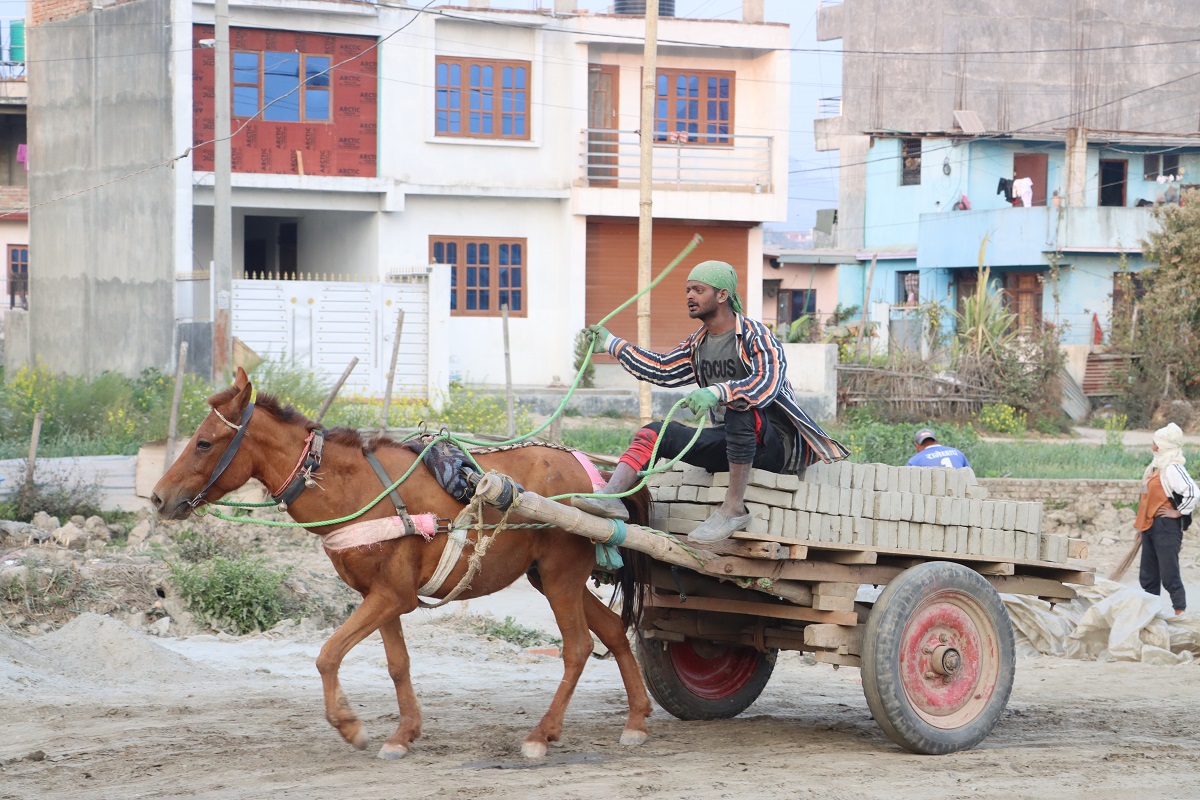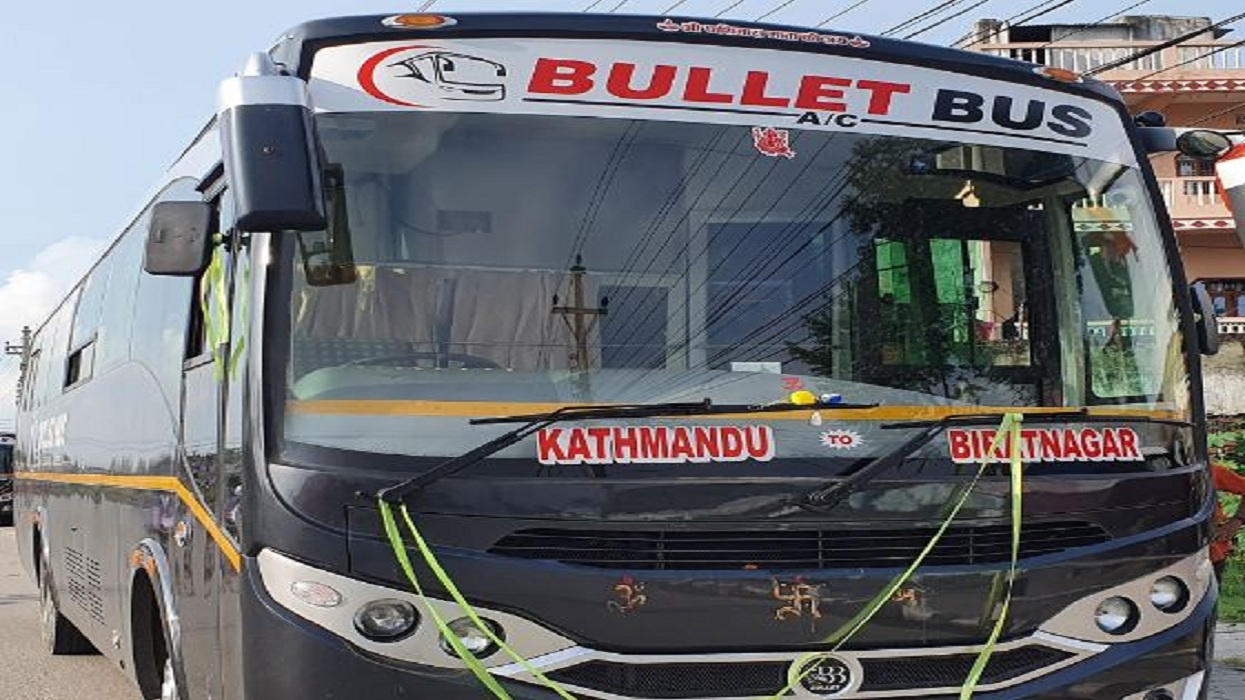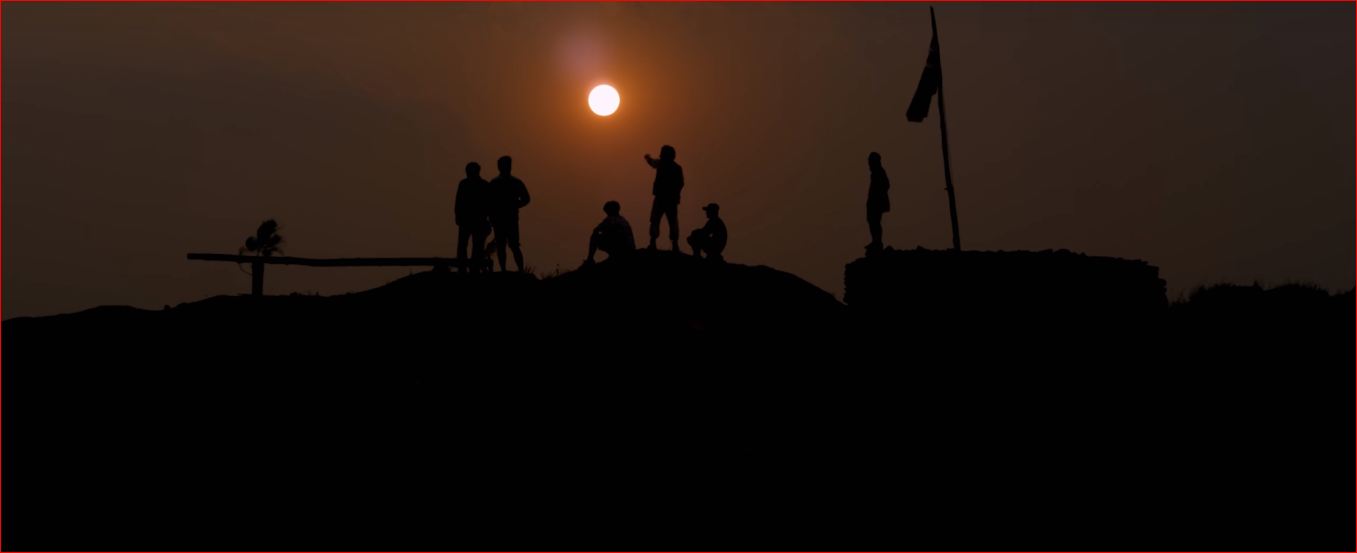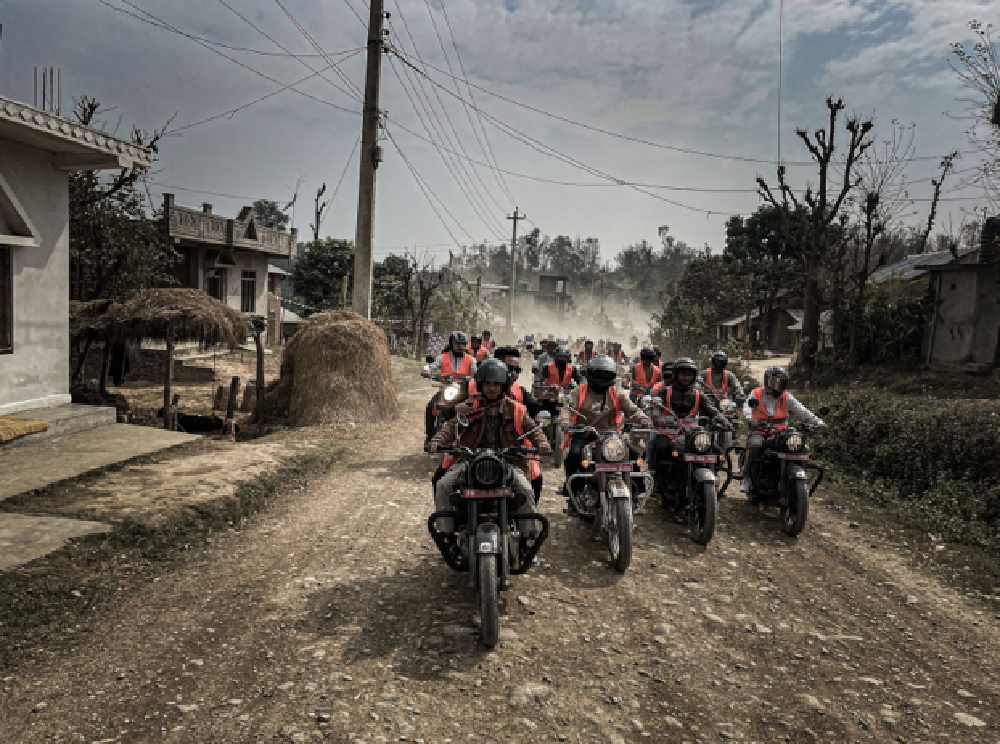Nepalgunj laborer’s 35-year journey in brick kilns with mules
Currently, he is employed at the Yapi Bhairav Chimney Brick Industry in Bhaktapur, working with four horses and two mules.

KATHMANDU: A 54-year-old Rajjat Kajgar from Nepalgunj has been working with mules to transport bricks for the past 35 years.
Currently, he is employed at the Yapi Bhairav Chimney Brick Industry in Bhaktapur, working with four horses and two mules.

Kajgar arrived in the Kathmandu Valley with mules as a child after losing his father. Following his friends’ footsteps, he began working in brick kilns and has since supported his family through this trade. “My ancestors did the same work. It has been 35 years since I started here,” he shared.
Explaining his work, Kajgar said that laborers stack the bricks, and the mules then transport them to the kiln. In return, they are paid per load. “Each mule carries around 350 bricks per trip, and once we reach 1,000 bricks, we receive Rs 450 from the kiln owner,” he explained.
However, the job comes with uncertainties. When asked if it is profitable, he replied, “It all depends on the weather. If it rains, the bricks get damaged, and we are forced to stop work for 15 days. We have to pay Rs 18,000 per month to our laborers. If it doesn’t rain, we make a profit; if it does, we suffer losses.”
Kajgar mentioned that three teams from Nepalgunj have come to work at the kiln this season. His group consists of six workers. He expressed concern over the shortening brick kiln season, stating that they now only get three months of work instead of the previous five.

“The government introduced some rules, and now we can work only for 90 days. We have to survive the whole year on these three months of earnings,” he said.
During the working season, mules are constantly engaged in transporting bricks. When they are not carrying fresh bricks, they graze in nearby fields. Regarding their feeding schedule, Kajgar explained, “They eat all night and work all day. During lunchtime, from 12 to 2 PM, they eat again before resuming work.”
He feeds his mules a mix of rice husk, maize, and molasses. Despite following his ancestral profession, Kajgar has no plans to expand. “Raising mules is expensive. A single mule costs Rs 80,000 to 90,000, and I don’t have that kind of money,” he lamented with a bittersweet laugh.

Another laborer from Nepalgunj, Sadaav Kajgar, also earns Rs 18,000 per month doing the same work. Once the brick kiln season ends, he shifts to construction work in cities. Currently, he is working under foreman Anil Raidas.
Similarly, Badam Kiria, another worker from Nepalgunj, is often seen listening to music while working. “Music makes work enjoyable. The day passes easily,” he said.
The brick kiln season typically lasts from November to April. During this time, laborers from distant places, including the Terai, migrate to Kathmandu Valley for work.
Many use mules to transport raw bricks. A mule is born from a male horse and a female donkey, making it a strong, reliable worker in the industry.
-Tenzing Dolma Tamang








